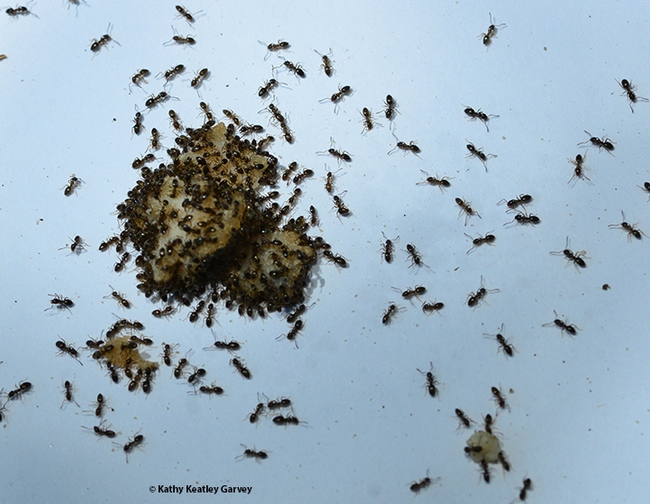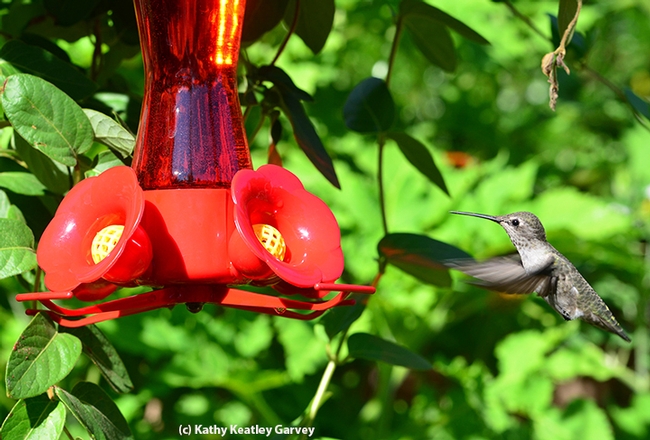How do you keep ants off your hummingbird feeders?
That was a question a Bug Squad reader asked: "I was wondering if you had any tips on how to keep ants off and out of the hummingbird feeder? I've put Vaseline on the line it hangs from, and that helped for a long time. But now I have a different type of and, similar to a big red and who is not deterred, they just walk right over the Vaseline. I've even freshened it up. Any ideas?"
We asked "Ant Man" Brendon Boudinot, an authority on ants--and who just received his doctorate in entomology, studying with major professor Phil Ward of the UC Davis Department of Entomology and Nematology.
Boudinot's response: "Teflon. In the ant research community, this is one of our favorite surface protectors against ants, as they cannot get a grip. Alternatively, Tanglefoot would work, but may also be dangerous for the birds if they come into contact with it. Teflon will need to be reapplied after there is evidence that its efficiency is being reduced, often due to exposure to water or extended humidity. The easiest thing to do will be to find the trail and give the surface a good wash, as the chemical trail will be removed. Ants are not able to remember the location of food sources without their trails. They will have to be lucky to rediscover the feeder."
The UC Statewide Integrated Pest Management Program (UC IPM) offers information on ants in its Pest Notes section, "How to Manage Pests, Pests of Homes, Structures, People, and Pets."
"Ant management requires diligent efforts and the combined use of mechanical, cultural, sanitation, and often chemical control methods. It is unrealistic and impractical to attempt to totally eliminate ants from an outdoor area. Focus your management efforts on excluding ants from buildings or valuable plants and eliminating their food and water sources. Reducing outdoor sources of ants near buildings will reduce the likelihood of ants coming indoors."
"Remember that ants often play a beneficial role in the garden. Become aware of the seasonal cycle of ants in your area and be prepared for annual invasions by caulking and baiting before the influx. Different species of ants respond to management practices differently. For management information specific to a particular species, see the Key to Identifying Common Household Ants. See also the videos related to ant management in the home." (See more information on management of ants.)
On another note, we recently received a curious email about ants that began with: "I hope this mail finds you and your family well and healthy regarding the current pandemic situation. I am sending you this email regarding the OUTRAGEOUS ASSUMPTION THAT YOU IMPLY THAT ANTS MIGHT HAVE A REMOTE RESEMBLANCE TO FEELINGS."
Who me? I rarely write about ants or photograph them (they seem to avoid me and my camera). To my knowledge, I've never thought, written or implied that ants "have a remote resemblance to feelings."
"Ants may not be sentimental," Boudinot told us, "but they sure respond to noxious stimuli in ways which indicate that their little neural systems communicate something which would roughly correspond to the sensation of pain. Indeed, there may be some basic inherited molecular link between ant, human, and earthworm aversive feelings."
Meanwhile, I'm heading back out to the family pollinator garden to fill our empty hummingbird feeders. Neither a hummer nor ant in sight...and no remote resemblance to feelings, either....
Attached Images:

